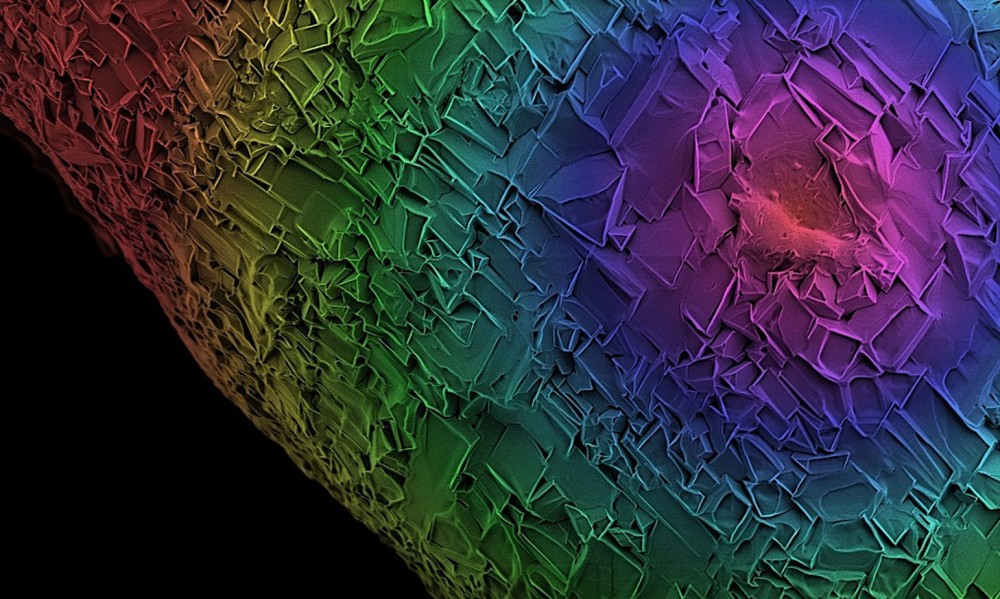 I first fell in love with molecules in my sophomore organic chemistry course. I remember commenting to my lab partner that organic chemistry problems were much more interesting than crossword puzzles, and they should be included in newspapers (with spelling as poor as mine, crosswords were never very fun). After failing to convince others of the merits of Sunday chemistry problems in the newspaper, I entertained myself by digging into the chemistry of the materials and products in our everyday world. Understanding the design and use of molecules has become a life-long endeavor. These last five years at the Berkeley Center for Green Chemistry (BCGC) have been wonderful, providing me with the opportunity to deepen my appreciation of chemistry and the larger social, economic, and political structures that influence the selection of chemicals.
I first fell in love with molecules in my sophomore organic chemistry course. I remember commenting to my lab partner that organic chemistry problems were much more interesting than crossword puzzles, and they should be included in newspapers (with spelling as poor as mine, crosswords were never very fun). After failing to convince others of the merits of Sunday chemistry problems in the newspaper, I entertained myself by digging into the chemistry of the materials and products in our everyday world. Understanding the design and use of molecules has become a life-long endeavor. These last five years at the Berkeley Center for Green Chemistry (BCGC) have been wonderful, providing me with the opportunity to deepen my appreciation of chemistry and the larger social, economic, and political structures that influence the selection of chemicals.
The mission of the BCGC is to advance the design, adoption, and use of inherently safer and more sustainable chemicals. We have made great strides in the past five years to normalize Green Chemistry and sustainability within the culture of chemistry. We have also succeeded in getting faculty and students outside of chemistry to be interested in how chemicals and chemistry both contribute to and can help solve many of the modern era’s environmental and health challenges. Our students and faculty have also spent an extraordinary amount of time translating the principles of Green Chemistry to broader audiences, including providing advice and training to state regulators, business, and K-12 students. These educational, research, and engagement projects have helped grow our Center from a handful of students, staff, and faculty into a program that has made lasting impacts on the way the people approach chemicals on and off campus.
We have be able to successfully bring faculty and students from a broad range of disciplines together to research and discuss both the drivers and barriers to Green Chemistry adoption. In the beginning, students and faculty struggled to find common language and approaches, slowing our progress on interdisciplinary initiatives. After a few iterations, however, we found the best way to remove these barriers was to assemble interdisciplinary teams of students within a classroom setting and have them work together to address materials selection challenges. These classes and projects have challenged the faculty to think and teach in new and more interactive ways, which has strengthened our ability to collaborate. By focusing on projects rather than lectures, we have been able to avoid trying to make everyone an expert on everything, and instead have focused on teaching techniques for productive collaboration and communication. The Greener Solutions program grew out of this approach and is now one of our flagship programs.
Greener Solutions has been a success because it simultaneously advances our educational, research, and engagement approaches to promoting Green Chemistry. During our early days as a Center we struggled to find ways to engage productively with external stakeholders. We spent too much time talking about what we might do and not enough time talking with people who were interested in solving particular chemical challenges. The Greener Solutions program partners interdisciplinary teams of students with external partners who have chemistry challenges. This is great for our students, who crave real-world application of their deep technical knowledge. It is beneficial for our partners, who gain insights into their chemistry challenges and have the opportunity to work with some of Berkeley’s best students. The program has also been a great testing ground for new research projects and approaches.
In just five years, BCGC has had a large and lasting impact on the educational landscape at UC Berkeley. Our initial grant funding in 2010 from the Cal EPA focused on the development of Green Chemistry undergraduate chemistry laboratory curriculum and the development of an interdisciplinary graduate course. By 2012, our team had managed to incorporate a dozen new experiments into the curriculum and, more importantly, we also helped create action within the Department of Chemistry to renovate all of the undergraduate labs and put Green Chemistry and sustainability at the core of this initiative. The Department went on to raise 10 million dollars for this initiative including a three million dollar gift from the Dow Foundation. Similarly, our interdisciplinary graduate class, first offered in 2011, has grown into an NSF funded educational program that funds 25 graduate students from departments across campus. We now offer two graduate classes and are continuing to engage more students on issues related to Green Chemistry.
This is an exciting time for the Berkeley Center for Green Chemistry; in many ways we are still getting started. Institutional change is slow, but after five years we have built some momentum, and I believe that we will be able to have an even bigger impact on interdisciplinary research at the nexus of chemicals, basic resources, and manufacturing in the coming years. We have a number of new projects developing in the wings and I am very excited to watch how they take shape under the capable leadership of Tom McKeag and the Center staff and faculty. I am also looking forward to continuing my work with students pursuing projects with the potential to improve the safety and sustainability of chemicals and products. My interactions with students have always been the highlight of my role at the Center and I am grateful that I will continue to have the opportunity to work with passionate students and innovators in my new role as Senior Advisor.
What we have accomplished at the Berkeley Center for Green Chemistry wouldn’t have been possible without the support of the College Deans and the Vice Chancellor for Research at UC Berkeley. The early support from the College of Chemistry, School of Public Health, College of Natural Resources, and the Haas School of Business were essential for giving the faculty the time and freedom to create the Center. We at the Center are grateful to our many funders, who include state and federal agencies, a number of foundations, and our industry partners (more information about these supporters can be found on our website). The Center has also benefited greatly from the interactions we’ve had with the larger Green Chemistry community around the country. Our curriculum efforts were supported by all of the work that came before us at the University of Oregon, ACS institute for Green Chemistry, and the Beyond Benign Foundation. Finally, I am personally grateful to all of the faculty, students, and collaborators that I have worked with during my tenure as Executive Director. I have learned something new every day and I could not have done it without all of you. Thank you!


























 I first fell in love with molecules in my sophomore organic chemistry course. I remember commenting to my lab partner that organic chemistry problems were much more interesting than crossword puzzles, and they should be included in newspapers (with spelling as poor as mine, crosswords were never very fun). After failing to convince others of the merits of Sunday chemistry problems in the newspaper, I entertained myself by digging into the chemistry of the materials and products in our everyday world. Understanding the design and use of molecules has become a life-long endeavor. These last five years at the Berkeley Center for Green Chemistry (BCGC) have been wonderful, providing me with the opportunity to deepen my appreciation of chemistry and the larger social, economic, and political structures that influence the selection of chemicals.
I first fell in love with molecules in my sophomore organic chemistry course. I remember commenting to my lab partner that organic chemistry problems were much more interesting than crossword puzzles, and they should be included in newspapers (with spelling as poor as mine, crosswords were never very fun). After failing to convince others of the merits of Sunday chemistry problems in the newspaper, I entertained myself by digging into the chemistry of the materials and products in our everyday world. Understanding the design and use of molecules has become a life-long endeavor. These last five years at the Berkeley Center for Green Chemistry (BCGC) have been wonderful, providing me with the opportunity to deepen my appreciation of chemistry and the larger social, economic, and political structures that influence the selection of chemicals.